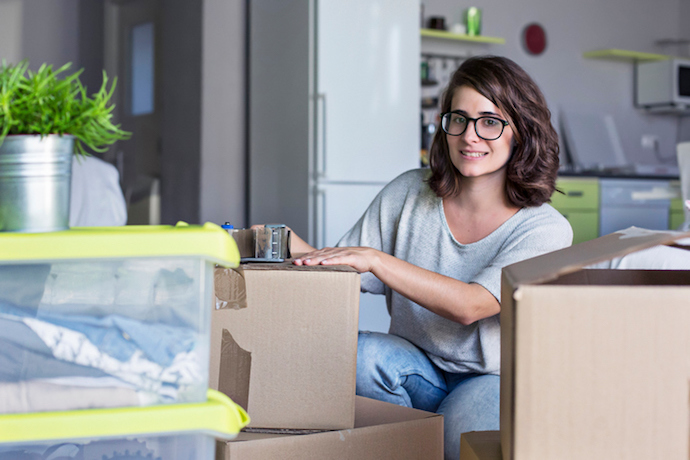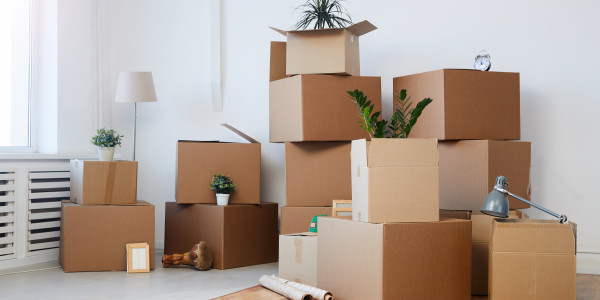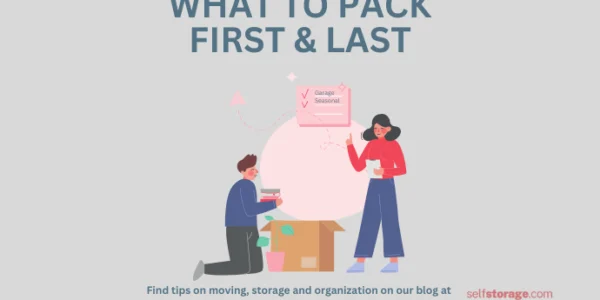Packing up boxes before a move can be an overwhelming task. Where do you even start?
We consulted three professional organizers for their best packing tips make the process as easy as possible — including minimizing stress and also preventing damage to your possessions.
15 Packing Tips for Your Next Move
1. PURGE BEFORE YOU START PACKING.
“Purge, purge, purge before the move,” said Andrea Wait, owner of Andrea Wait Organizers in San Francisco. “You don’t want to unpack on the other side and say, ‘Why did I bring this?’”
Wait says the last thing you want to do is pay a moving company to transport something to your new home or apartment that you end up getting rid of anyway.
2. ASSESS MOVING SUPPLY NEEDS.
Assess how many items need to be packed and buy packing materials accordingly, Wait said. This includes:
- Cardboard boxes in a variety of sizes,
- Packing paper or newspaper
- Bubble wrap
- Packing tape
- Scissors or a box cutter
- Black markers for labeling boxes
If you saved any of the original packaging for small appliances or electronics, definitely make sure to reuse those for the move.
3. FIND FREE BOXES AND PACKING SUPPLIES.
“These days with Craigslist, Freecycle and Nextdoor, people post, ‘Hey we just moved and have boxes. If you want them let me know,’” said Debra Baida, owner of Liberated Spaces in San Francisco. “Or they have packing paper or bubble wrap…There’s a lot of free stuff out there that can be reused.” You will want to make sure that any used boxes are in good shape, the last thing you want is for the bottom to fall out!
4. GROUP BOXES BY ROOM.
On of the best moving tips is to pack boxes room by room. You’re less likely to get distracted and mix items, and you’re more likely to pack “like items” together, such as glasses in one box, linens and towels in another. This organization upfront will help later with unpacking as well.
5. PACK LIKE ITEMS TOGETHER.
Another great packing tip is to “Always sort your things out ‘like by like,’ so you get similar things packed in boxes so when you unpack they’re already pre-organized to put away into your new house,” said Debra Metzler, owner/founder of Effective Organizing LLC in Phoenix. For example, you should pack pots and pans in the same boxes as bakeware.
6. CHOOSE THE RIGHT SIZE BOXES.
Heavy items like books, for example, should go into small boxes; otherwise, the boxes will become too heavy to move on and off a moving truck. You might also want to pack fragile items like drinkware and dishes in a small box. “Lighter items like linens, pillows and towels can go in larger boxes,” Wait said.
7. PACK HEAVY ITEMS ON THE BOTTOM.
When packing an array of different-sized items for a room, the heaviest items should go on the bottom of the box and the lightest on top. But remember, don’t over pack boxes. “It makes no sense to strain your back moving your possessions,” Wait said.
8. DON’T UNDER PACK.
“Don’t leave empty spaces in boxes where things will slide around as that’s a quick way for broken items,” Wait said. You can maximize space by using towels and blankets to fill the boxes.
Metzler adds: “You have to pack all of your linens, towels, small area rugs and placemats anyway, so use some of those things as packing materials. You can cushion the bottom of boxes that have some fragile décor items. You can roll them up and set them down vertically into the corners of the boxes to keep the boxes’ integrity strong for some of your more delicate things.”
Balled up paper can provide cushioning as well, Metzler said.
9. DON’T SKIMP ON TAPE.
Use several pieces of packing tape to close the top and bottom seams and then make a couple of wraps all the way around the top and bottom edges.
10. LABEL EACH BOX BY ROOM.
List the contents as well, such as “dishes,” “toys” or “computer components.”
Baida recommends labeling boxes on at least two sides, preferably three.
11. PHOTOGRAPH CONTENTS.
“I like to make notes of key items in a box so you have a checklist,” Baida said. “The beauty of technology is that you can write that list out and take pictures of it with your phone.”
12. NUMBER YOUR BOXES.
This way you’ll know if a box ends up missing. You could go a step further and create a spreadsheet with each box number and its contents.
13. USE WARDROBE BOXES FOR CLOTHES.
“If your current closet is already organized, then just move the items into the boxes exactly how they’re hung in your closets,” Wait suggested.
“I always, always say it’s worth the price to get some wardrobe boxes,” Metzler added. “The bottom of wardrobe boxes – under the clothes — is a perfect place for shoes, purses and other items in your closet.”
14. CONSULT WITH A PRO MOVER.
When it comes to fragile and expensive items– like artwork — you may want to consult with a mover to have them pack the items professionally, Wait suggested.
15. PACK AN ESSENTIALS BOX.
Pack a box of essentials for your family for immediately after the move. This should include:
- Fresh changes of clothes
- Toilet paper
- Paper towels
- Toiletries and medications
- Towels and a shower curtain
- Bedding, including pillows and sheets
- Snacks
- Disposable utensils and dinnerware
You could also include a few cups and your coffee pot for the next morning.
With the right supplies you can ensure your belongings stay safe and intact during your next move. Visit our other blog posts for more packing tips!





